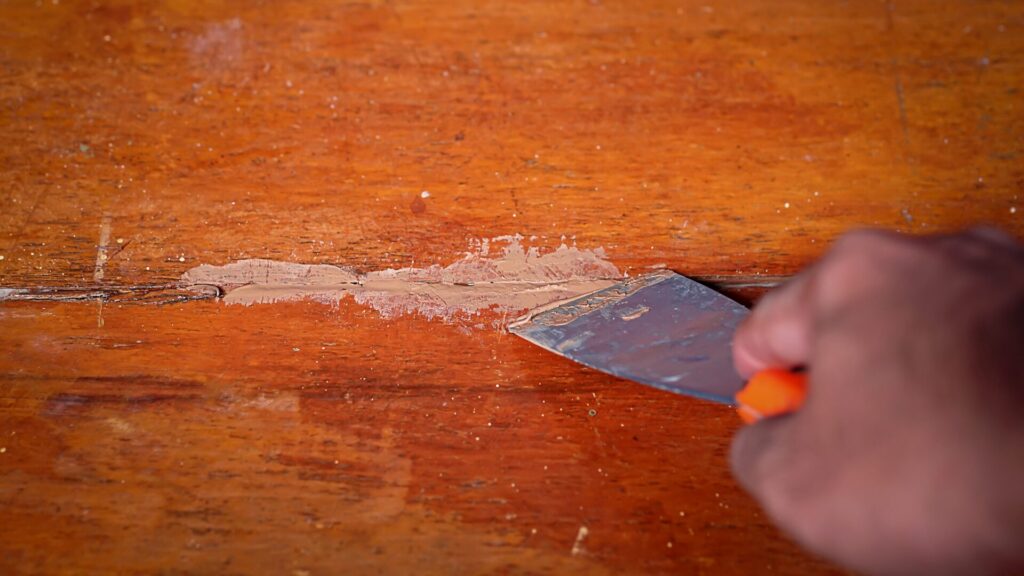
Table of Contents
If you’ve ever noticed a soft spot in your window frame or a bit of rotted trim on your porch, your first instinct might be to fix it fast. For many homeowners, that means grabbing a tub of wood filler or putty from the hardware store. It seems simple enough: patch the damage, sand it smooth, and move on.
Unfortunately, that quick fix rarely lasts. Within months—or even weeks—you might see cracks reappearing, paint peeling again, or new soft spots forming nearby.
So why do these repairs fail? And what actually works to stop wood rot for good?
Let’s look at what’s really happening behind those patches—and how Preservan’s permanent preservation process keeps your home protected for the long term.
The Problem with Traditional Wood Fillers
Hardware store fillers and putties are designed for cosmetic fixes—not structural repairs. They’re made from materials like latex, polyester, or cellulose that don’t bond deeply with natural wood.
When used on rotted wood, these products simply cover the surface. Underneath, the fungus that caused the rot in the first place is still active. Over time, moisture returns, the filler separates from the wood, and the damage spreads all over again.
Here’s why this happens:
- They don’t stop the fungus. Fillers mask the damage but don’t eliminate the root cause—living spores inside the wood.
- They don’t expand and contract. Wood naturally moves with temperature and humidity changes. Most fillers are too rigid and crack when the wood shifts.
- They don’t seal out moisture. Water seeps between the filler and the wood, reintroducing the perfect conditions for rot to return.
In short, these “repairs” are more like temporary bandages than lasting solutions.
Hidden Costs of Temporary Fixes
A $15 tube of filler might seem cheap, but repeat repairs quickly add up. Many homeowners find themselves patching the same area every couple of years as damage spreads beneath the surface.
These short-term fixes lead to:
- Frequent repainting and refinishing
- Hidden mold or structural damage
- Wasted time and materials
- Reduced home value from visible patchwork
That “quick fix” often becomes a recurring, expensive chore.
Why Moisture and Fungi Always Win
Wood rot fungi thrive on three things: moisture, oxygen, and wood fibers. When fillers are used on damp or partially rotted wood, those fungi remain alive inside. Even a trace of moisture keeps them active.
As the filler hardens, the spores continue eating through the wood beneath—until the surface cracks, softens, or bubbles. The decay was never gone; it was simply covered.
A Better Way: Permanent Epoxy Wood Restoration
Instead of hiding damage, Preservan’s approach eliminates it at the source. Our permanent wood preservation process uses EverResin™, a proprietary epoxy resin engineered for long-term wood restoration.
The process begins with a thorough inspection, then we:
- Remove decayed fibers while preserving healthy wood.
- Eliminate moisture and fungi to create a stable surface.
- Inject EverResin™ deep into the pores, restoring strength and durability.
- Shape and refinish the surface so it looks and performs like new.
The result isn’t a patch—it’s a permanent structural repair that’s stronger than the original wood. EverResin™ expands and contracts naturally with the wood, sealing out future moisture and stopping rot for good.
Backed by Science—and a 10-Year Warranty
Preservan’s process isn’t guesswork—it’s proven science. Our epoxy restoration system has been tested across countless homes nationwide and is backed by a 10-year warranty.
Where fillers fail within months, Preservan repairs are designed to last decades, giving homeowners lasting protection and peace of mind.
Long-Term Value That Outweighs Short-Term Savings
Compared to repeated filler fixes or costly full replacements, epoxy preservation often saves homeowners money over time.
- No repeat repairs: Once restored, the area won’t rot again.
- Lower maintenance: Paint and sealants last longer on sound wood.
- Less waste: The process preserves existing materials rather than replacing them.
- Added durability: Reinforces surrounding wood and prevents future decay.
Think of it as preventative medicine for your home—addressing the cause instead of just the symptoms.
Real-World Examples of Filler Failure
We often hear from homeowners who’ve tried to patch window sills, porch columns, or fascia boards multiple times—only to see the same problem return.
A window frame, for example, might look fine after being filled and painted. But behind that thin layer of filler, the moisture remains. Within a year, the frame starts softening again, paint begins to bubble, and eventually the wood gives way completely.
In contrast, Preservan’s epoxy restoration restores the original strength of the frame and seals it against future rot. Once treated, that same window is protected for years to come.
The Bottom Line: Skip the Filler, Fix It for Good
Wood fillers and putties might seem convenient, but they only hide the problem temporarily. The rot will come back until it’s properly treated.
With Preservan’s EverResin™ system, you can stop the cycle for good. Our process is scientifically backed, environmentally friendly, and built to protect your home for the long term.
If you’ve been battling the same soft spots or failing patches, it’s time for a solution that truly lasts. Book an assessment for a free quote today, and see why homeowners nationwide trust Preservan to restore their wood the right way—the first time.
